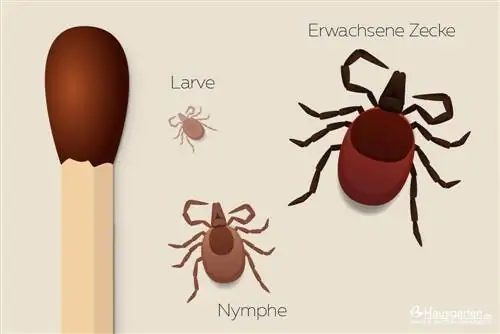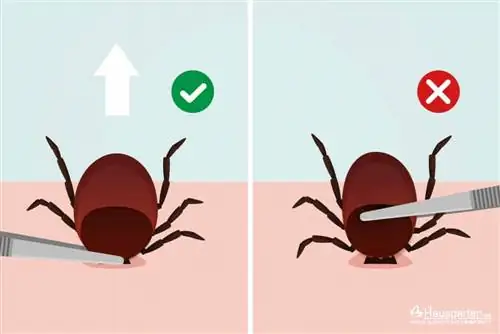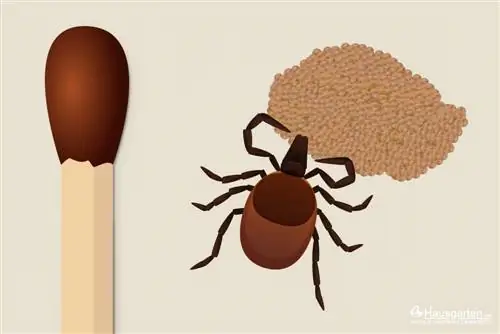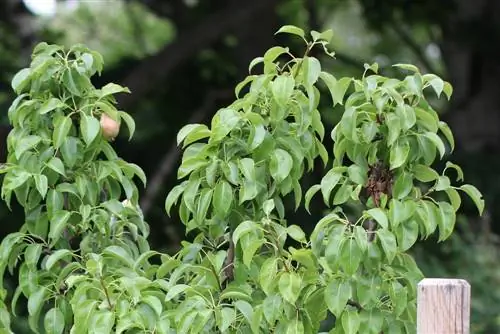- Author admin [email protected].
- Public 2023-12-17 03:39.
- Last modified 2025-01-24 12:45.
Ticks mainly appear from May to October. Mild temperatures ensure that the bloodsuckers appear all year round. There are typical areas in the garden where ticks live and lay eggs.
Identifying egg clutches
Ticks prefer light-protected areas with a moist and mild microclimate to lay their eggs. The females lay their eggs directly on the ground or on bushes, perennials and grasses. The widespread common woodbuck produces 2,000 to 4,000 eggs per clutch, which stick together in a compact package. These clutches are called tick nests and are orange-red to brownish in color. After a few days, the six-legged larvae, which are less than half a millimeter in size, hatch. They are freely mobile and lie in wait for rodents, which represent a suitable intermediate host.

Note:
For ticks to develop successfully, minimum temperatures of five to eight degrees and humidity of at least 80 percent are necessary.
Locating tick nests
Ticks like the common wood tick that infest humans are among the lurkers. They hold onto blades of grass or branches with their legs to wait for their host animals. The ticks themselves do not move more than one meter in a horizontal direction. As bloodsuckers, they spread through their host animals and are therefore mainly found in the same habitat. In your own garden, mice are the most important dispersal units for tick larvae and nymphs. There are some hotspots where you should expect tick nests:
- damp forest edges and shaded fence posts
- between stacked pieces of wood and stones or at the bottom of stone walls
- dense areas near bird feeders
- in hedges, bushes and dense flower or perennial beds
- in the tall grass or on the compost
- Leaf piles and densely planted flower pots

Note:
Ticks can move through the apartment at four to five meters per hour without having to take a break.






